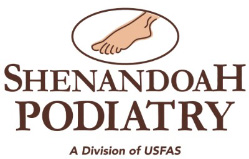
Injuries are common in high-impact sports where bodies fly around, such as football, basketball, or hockey, but even low-impact sports like golf or cycling see their fair share of foot problems. A foot injury can quickly turn painful and take you away from your favorite sport, but Shenandoah Podiatry can help you get back on your feet.
Sports Injuries Our Foot Doctors Will Treat
Want to keep competing? Here’s a look at some of the most common sports injuries we treat:
- Plantar fasciitis. Especially common among the running and basketball crowd, plantar fasciitis is the most common cause of heel pain. When weight is applied to the heels, the ligament that runs across the bottom of the foot can become inflamed. If you feel a stabbing pain in your heel, this is the most likely culprit. In most cases, physical therapy or special inserts will remedy the pain.
- Achilles tendinitis. The Achilles is the largest tendon in the body, and it’s the primary tendon used in running and jumping. When it gets used too much, it can become inflamed, making any movement difficult. It may be Achilles tendonitis if you have pain or stiffness along the bottom of your heel, which worsens when you’re active and lessens when you rest. In most cases, surgery is unnecessary, and the injury will heal with medication, a change in footwear, rest, and physical therapy.
- Ankle sprains. When the ankle twists or rolls beyond its normal range, the ligaments inside can become strained, causing an ankle sprain. This often happens when someone jumps and lands awkwardly or plants their foot while running. Lower ankle sprains are the most common and easiest to recover from, but high ankle sprains can have long-term effects. For a severe sprain, crutches will likely be needed until the pain is gone, at which point a brace or walking boot may be worn.
- Stress fractures. Your feet have many small bones, and over time, repeated stress from jumping or running can eventually become too much and cause a tiny crack. The pain of a stress fracture starts very small but becomes worse—whether you’re competing or not. Treatment will mean rest, ice, and possibly a cast or brace.
- Turf toe. While the name sounds lighthearted, turf toe is a very painful condition that affects a variety of athletes, not just those competing on turf. It’s a sprain of the ligaments around the big toe, and it’s caused by repeated pushing off when running or jumping. Symptoms include pain, swelling, and a lack of mobility around the affected toe. Treatment usually involves immobilizing the toe with a splint that holds the toe to the one next to it.
How to Prevent Sports Injuries to Your Feet Including Ankle Sprains and Stress Fractures
Injuries are sometimes unavoidable when you’re an athlete, especially in sports that involve contact with other people. But there are some steps you can take to help prevent foot injuries while competing:
- Choose properly fitting footwear.
- Make sure you stretch and warm-up before competing.
- Utilize strength training to make your foot and ankle stronger.
- Practice proper technique for jumping, landing, and pivoting.
- Wear a brace to lessen the chance your ankle rolls improperly.
- Be careful running on hills or uneven terrain like trails.
Most importantly, listen to your body. If something feels painful or you see swelling, visit a doctor to have things checked out.
At Shenandoah Podiatry, We Can Treat Your Sports Injury Like Turf Toe and Ankle Sprains
Your feet can sustain up to 20 times your body weight during certain physical activities. If a foot injury is keeping you from the sports you love, it’s time to take action. The experienced staff at Shenandoah Podiatry has treated plenty of athletes, so we know what it takes to get you moving again.
A visit to the doctor can be an anxiety-inducing experience for some people, but many of our patients find their experience with us can actually be relaxing. If you have a sports injury in your foot, give our office a call today at 540-904-1458 to set up your appointment. You can also use our online contact form to request an appointment, and we’ll get back in touch as soon as we can.
